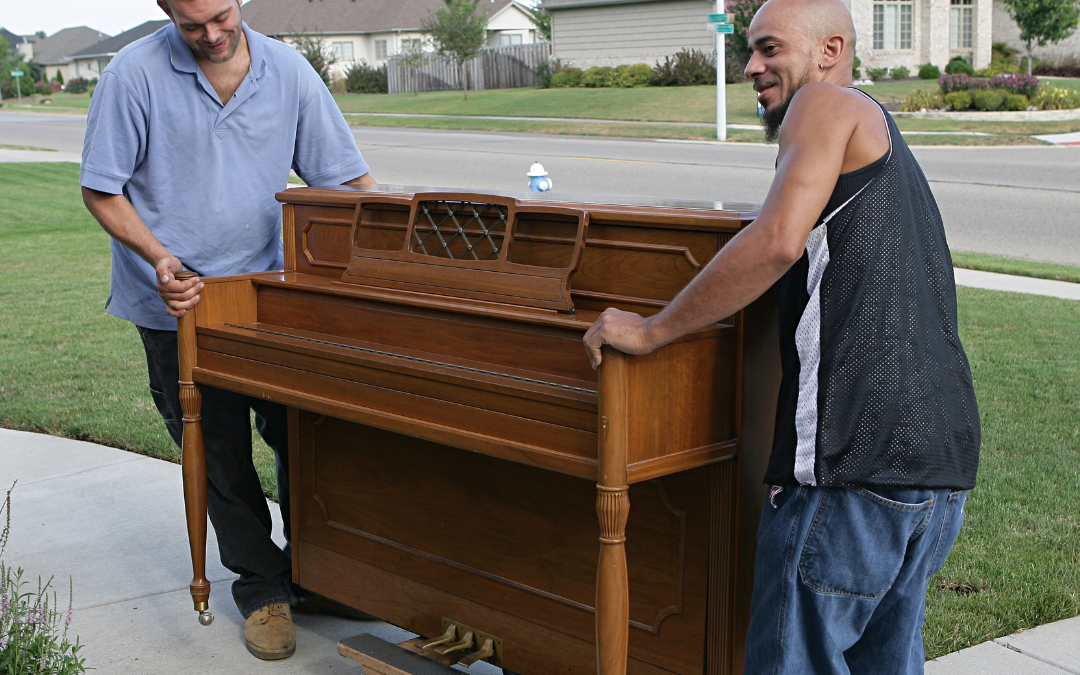Moving Scams to Avoid When Hiring Moving Companies
May 20, 2023
Famous Places in the East Bay
May 20, 2023When transporting a piano, it is imperative to use proper equipment and take steps to prevent damage. Close and lock keyboard lid if possible to protect keys from becoming damaged during transportation.
Next, obtain caster cups (small square or round coverings used to place under heavy furniture such as couches and tables) as well as either a hand truck or dolly (depending on the size of your piano) which are essential tools most professional movers use for moving.
Caster Cups
Though piano wheels may look like they provide an easy means of moving it around the floor, their purpose is not meant for long distance travel. Casters may collapse under their own weight or tilt forward over time causing damage to hardwood floors in the process.
Utilizing caster cups under a piano’s feet is an easy way to prevent this from occurring. Caster cups are small square or round coverings which can be placed under furniture items to protect floors from scratching.
Two people can quickly move a piano with just the use of caster cups on its legs as it is being lifted, to help protect against indentations on hardwood floors and distribute weight evenly across its entirety. This method provides a cost-effective option for those without access to a dolly but who still need to protect their floors from damage.
Dolly
Dollies are essential when moving a piano without damaging its wood floor, as they glide smoothly over each surface and are easy to manipulate. Dollies can be purchased or rented from U-Haul, Penske and Budget companies which sell or rent moving supplies; alternatively you could also use moving blankets or pads as quick solutions to safeguard hardwood flooring surfaces.
Put together a team of strong helpers and position them at both ends of the piano, so at least four people are available to lift it and wear footwear with good traction. Place a furniture dolly beneath it, secured with moving straps (one person should hold onto one end), then carefully lift and load the piano onto it before beginning its relocation journey.
Moving Pads or Blankets
Pianos can be heavy, causing damage to floors as well as straining backs of those moving them. Castor cups, dollys and blankets or padding may help reduce this risk during transport; before starting any move make sure keyboard lid is locked and closed securely before getting underway!
Clear a path and remove obstacles, such as doors. Additionally, plan ahead for stairs and narrow passageways and turn the piano on its side if necessary to fit through doorways.
Furniture dollys are popularly used by piano movers because they’re easier to maneuver and gentler on hardwood floors than standard household cart wheels. Once the piano has been lifted onto a furniture dolly, secure it using moving straps so it doesn’t roll around or tip while being transported. Finally, use blankets or padding secured with tape around its entirety in order to prevent bumps and bruises in transit – especially around its corners.
Moving Straps
Upright pianos can weigh hundreds of pounds. When being moved incorrectly, their legs can break under the pressure of weight and friction on both floors and carpets. To protect each leg during transportation, use flat plywood underneath each leg as you move it along its journey. Obtain extra hands if possible in helping lift and transport it from truck to home or another location within your house on furniture dollys.
Before moving your piano from room to room, it is crucial that you plan out its route carefully and consider all possible solutions for moving it from one area to the next. Doing this will prevent unnecessary assistance being sought or supplies purchased when your piano won’t fit through any doorways or up and down staircases. In addition, make sure your moving team members can physically handle its weight without incurring injuries as this will help avoid unnecessary headaches!




